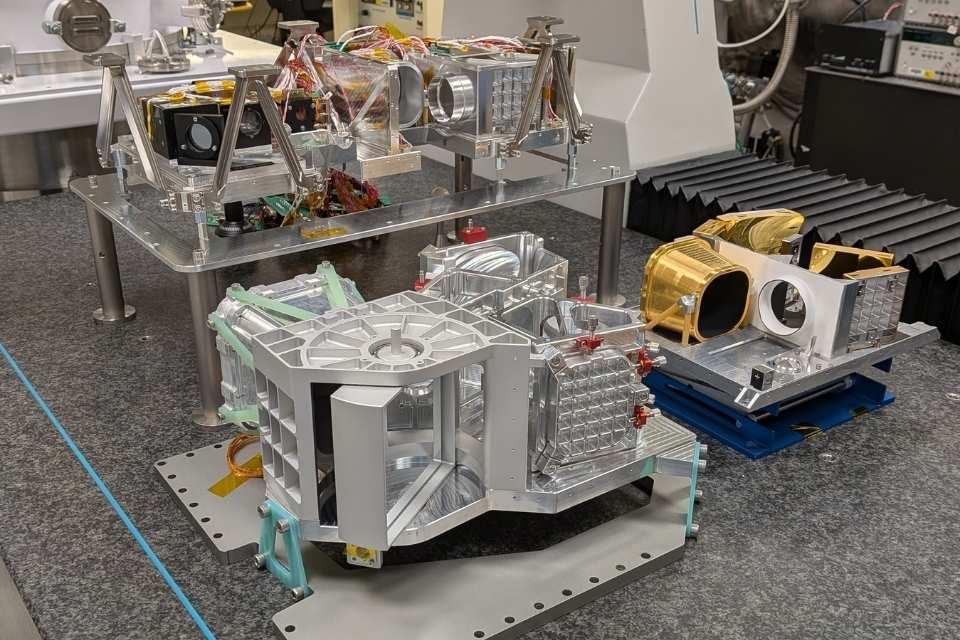The European Space Agency (ESA) has announced its preliminary selection of payloads for its future Mars exploration mission and the results include an Oxford Physics-led instrument named BEBOP.
BEBOP (Broadband Exploration with Bolometric Optics) is a thermal imaging system that has been developed at the Department of Physics. It will be tasked with enabling accurate weather forecasting on Mars in order to improve the safety of robotic or human explorers on the surface. The camera is based on the Lunar Thermal Mapper that was sent to the Moon earlier this year as part of NASA’s Lunar Trailblazer; a similar instrument, MIRMIS (Modular Infrared Molecules and Ices Sensor), is already under construction at Oxford for ESA’s Comet Interceptor mission, due to launch in 2029. All three optical systems were designed by Rory Evans in the Space Instrumentation group with fabrication led by Professor Neil Bowles.
‘BEBOP will be capable of making frequent measurements of the temperature of the Martian atmosphere and surface, as well as how much dust is suspended in the atmosphere,’ explains Dr Kevin Olsen, Principal Investigator for BEBOP. ‘It will do this over nearly the whole planet and with spatial resolution of a few kilometres. While some aspects of the Martian atmosphere can be reconstructed in simulations, being able to actually predict how it is changing is a data-limited problem. Of critical importance will be learning what causes dust storms to form and build, especially into the global phenomena that encircle the red planet once a decade.’
At its heart, BEBOP has three main components: a mirrored telescope, designed by Dr Evans; a set of infrared filters, built by Oxford; and its detector, which is commercially available. The way BEBOP works will be to scan across the visible side of Mars from north to south to create a set of images of the entire side of the planet in view. An image is created for each of 16 infrared filters. Each image measures light coming from Mars at a different wavelength, and subtle differences between them will tell us about what is going on in the atmosphere. Early development of the BEBOP optical system was funded by the UK’s Centre for Earth Observation and Instrumentation (CEOI).
BEBOP will be on board ESA’s LightShip, the interplanetary space tug that will transport its ‘passenger’ spacecraft SpotLight to a low orbit around Mars before going on to its own high orbit of Mars – somewhat akin to one of Earth’s geostationary communications or weather satellite. Once successfully in orbit, the initial mission should be followed by two further LightShip launches meaning a total of three BEBOP cameras will be orbiting Mars to ensure constant monitoring of the planet’s atmosphere.
‘BEBOP is nominally planned to last at least 12 years and to be followed by two more versions on the next LightShip missions,’ continues Dr Olsen. ‘By monitoring the entire planet at all hours, the start of dust storms will be witnessed with unprecedented clarity.’
The first LightShip mission with its passenger spacecraft, SpotLight, is aiming for a 2032 launch. BEBOP is one of four instruments preliminarily selected for the first LightShip space craft, alongside a sub-millimetre wave instrument dubbed MADNESS, a multi-band imaging suite called DESI, and a fireball camera named METEORCAM.

